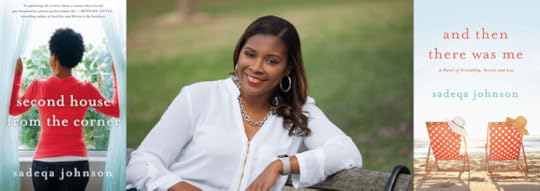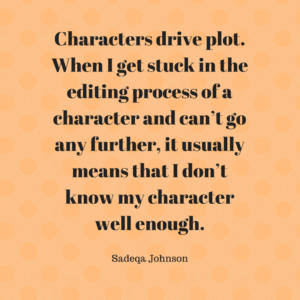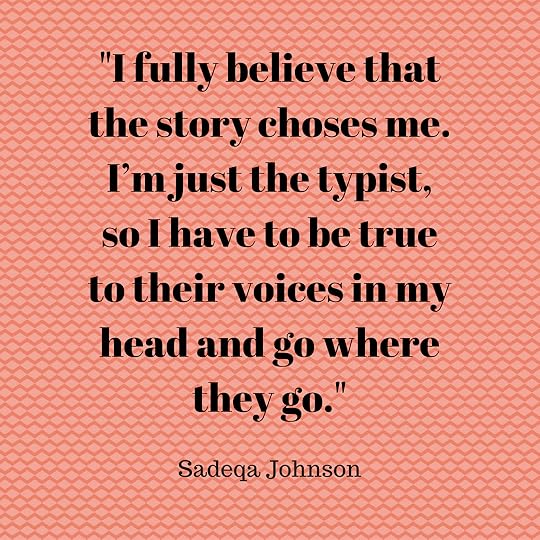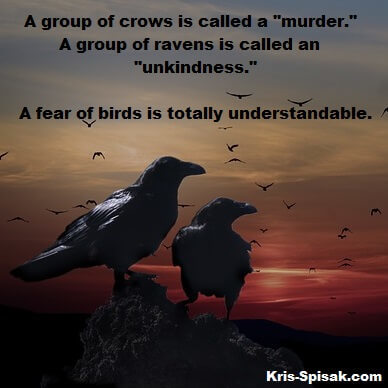Kris Spisak's Blog, page 22
December 7, 2017
Writing Tip 333: Please Stop Putting Apostrophes on Your Holiday Cards

Sure, I already cover this in Get a Grip on Your Grammar, but ’tis the season for a reminder.
Join 550+ subscribers and sign-up for my writing and editing email newsletter for more tips like this.
The post Writing Tip 333: Please Stop Putting Apostrophes on Your Holiday Cards appeared first on Kris Spisak.
December 5, 2017
Trivia: The War on X-mas

Join 550+ subscribers and sign-up for my writing and editing email newsletter for more language trivia like this.
The post Trivia: The War on X-mas appeared first on Kris Spisak.
November 30, 2017
Writing Tip 332: “Ye” vs. “The”

 If you think saying “ye olde” makes things sound colonial and quaint, maybe you don’t want to hear that you’re mispronouncing it.
If you think saying “ye olde” makes things sound colonial and quaint, maybe you don’t want to hear that you’re mispronouncing it.
Yikes. Who’s guilty of this?
I know I have been.
The truth of the matter is that the “th” sound was not always written by the letter combination “t” and “h.” Historically, it was written with a “þ,” which, as you know, isn’t a part of our contemporary alphabet. When English writing was more standardized and the “þ“ dropped out of use, a “y” was commonly used because its shape closely mirrored the “þ.” Hence “þe” became “ye.” However, it was always pronounced as we pronounce the “th” now.
Colonials knew this. In the modern day, we seem to have forgotten.
So next time you want to tap into a bygone era, skip the “ye” and instead use the standard “the” if you’re speaking. Spelling has changed over time, just like “old” has been written as “olde,” “alde,” and “auld,” but pronunciation has remained fairly consistent.
It’s not ye old trickery; it’s invented linguistic nostalgia.
And now you know better. Huzzah!
Join 550+ subscribers and sign-up for my writing and editing email newsletter for more tips like this.
The post Writing Tip 332: “Ye” vs. “The” appeared first on Kris Spisak.
November 24, 2017
Authors on Editing: Interview with Sadeqa Johnson

When people think of writers, they don’t always think of the work ethic that it requires to sit down and make a creative project come to be. There is more than just imagination required. There is dedication, determination, and a seemingly endless drive that separates a hobbyist from a professional.
Talking with a wordsmith like Sadeqa Johnson reminds me of this creative truth. Many have a literary calling, but not everyone moves from a dream to a reality, from black page to ink-covered manuscript, and from rough draft to polished final project ready to share with the world. A masterful storyteller, teacher, and inspirational speaker, Sadeqa is a writer to pay attention to. I’m honored to present you with the following interview.
Sadeqa Johnson, a former public relations manager, spent several years working with New York Times best-selling authors such as JK Rowling, Bebe Moore Campbell, Amy Tan and Bishop TD Jakes before becoming an author herself. Her debut novel, Love in a Carry-on Bag, is the recipient of the 2013 Phillis Wheatley Award for Best Fiction. She is the author of Second House From the Corner and And Then There Was Me. A native of Philadelphia, she has lived in New York City, hips towns in New Jersey, and has recently relocated to Richmond. She teaches her signature writing workshop Pens Up, Fears Down quarterly, is a motivational speaker, wife and mother of three incredibly busy children. Central Virginia writers take note that she is teaching a number of upcoming workshops in 2018.
Q & A with Author, Speaker, and Blogger Sadeqa Johnson
Kris: Writing is a craft—the more we do it, the better at it we become—but what about editing? Are you becoming a better editor of yourself the more that you do it? Has your revising process changed at all between how you handled your first book and your most recent?
Sadeqa: Maybe a little, but I think for the most part, I’m consistent with constantly tweaking my work. My first novel, Love in a Carry-on Bag, I drafted nine times. My second novel, Second House From the Corner, I think I dropped down to seven. My chops have grown for writing, so even though I’m drafting less now that I’m working on my fourth book, each draft is cleaner. I read each chapter out loud during the revision and editing process. This helps me figure out where breaks should fall and if the sentences are too wordy.
Kris: Do you edit as you write or do you plow forward at full steam, letting words and punctuation fall where they may?

Sadeqa: For the first draft, I try to plow through for as long as the voices are talking in my head, or my writing time ends and it’s time to pick up the kids. I start each writing day with reading what I wrote the day before. I can’t help but edit as I go and then I continue with the new material.
Kris: Characters are sometimes one of the hardest pieces of a story to edit, and your characters are so alive. Each is unique and fully-themselves. How do you edit your writing when it comes to your characters?
Sadeqa: Characters drive plot. When I get stuck in the editing process of a character and can’t go any further, it usually means that I don’t know my character well enough. In that case, I’ll stop trying to force it and rewrite my character bio. Sometimes I move through my life asking myself constantly how Pheby (my character) would react in this or that situation. That’s the actor in me getting into character and drawing them out so they will guide me.
Kris: Have your characters intentions ever edited you? In other words, did you ever have a plan that a character refused to follow?
Sadeqa: I usually keep my plans loose. I start every novel with a synopsis which is my road map. When the story starts, I have a game plan but I’m not rigidly attached to it. I often let characters wander off. When I follow them, it usually enhances the story and makes it more delicious. I fully believe that the story chooses me. I’m just the typist, so I have to be true to their voices in my head and go where they go.
 Kris: I love that idea. Now, when it comes to a character’s dialogue, how do you revise his or her words so that they remain true to the speaker?
Kris: I love that idea. Now, when it comes to a character’s dialogue, how do you revise his or her words so that they remain true to the speaker?
Sadeqa: I love writing dialogue. I spend a lot of time eavesdropping on people’s conversations, tattooing in my mind how real people in the world speak. When I edit, I really just write what I hear in my head. That changes with each draft, but the more I screw around with the dialogue, the more authentic it becomes.
Kris: Okay, you know I have to ask. Every writer has a pet peeve about writing—be it a grammar mistake that bothers them, a word they constantly see misused, or something that is often overlooked in the editing process of other writers. What is that pet peeve for you?
Sadeqa: My pet peeve is reading the same word over and over again. There are so many words in the dictionary, and it drags the story down. I write with a big thick thesaurus next to me always, so I can come up with fresh words that will keep the story moving. Oh, and of course typos drive me nuts!
Kris: What is your favorite editing methodology that you’ve learned along the way?
Sadeqa: My favorite editing technique is to retype between drafts. It’s time consuming and makes my fingers cramp up, but it works. When I finish a draft, I print the entire manuscript, my comments in the margins, and then open a new document in my computer and start typing the whole thing over. Retyping the manuscript helps me to cut out things that don’t need to be there and add in more details where the story is lacking. It also allows me to relive the story, and while I relive it, I see the flaws. I usually retype the first two to three drafts.
Remember how I started this post with the idea of work ethic? Retyping a manuscript is not a simple item to check off an editing to-do list, but it’s a fascinating piece of advice. The more we review our work and the more we relive our stories, the more everything can be refined. I love hearing how different writers tackle their revisions. Over the course of these Authors on Editing interviews, we’ve learned a lot of varying approaches. We all have to find our ways, don’t we?
Thank you for your time and the glimpse into your writing process, Sadeqa Johnson, and happy writing, folks!
Join 550+ subscribers and sign-up for my monthly email newsletter for more interviews like this.
The post Authors on Editing: Interview with Sadeqa Johnson appeared first on Kris Spisak.
November 23, 2017
Writing Tip 331: “Lighted” vs. “Lit”

 If your buddy is “lit,” he’s either drunk or he’s wearing a light-up Christmas sweater. If he’s “lighted,” I suppose you know intoxication is out of the question, but is there a difference otherwise? Should you be worried about flairs of flame?
If your buddy is “lit,” he’s either drunk or he’s wearing a light-up Christmas sweater. If he’s “lighted,” I suppose you know intoxication is out of the question, but is there a difference otherwise? Should you be worried about flairs of flame?
The difference between “lighted” and “lit” is a question that comes up fairly frequently, and people are always looking for the simple answer. The problem with this query is that they are both correct.
Yes, it’s true:
The verb “light” has two acceptable past tense forms: “lighted” and “lit.”
If you’re looking for the original word, “lit” is the answer; however, “lighted” came to be with growing popularity and acceptance over two hundred years ago. “Lighted” looked like it might take the lead and become the true language victor—much like “spilled” overtook “spilt” or “went” overtook “gaed”—but then “lit” had a major resurgence starting in roughly 1930 that “lighted” hasn’t been able to compete with.
“Lit” might be winning the popularity contest at present, but if you feel like “lighted” works for you, go for it. There aren’t many occasions where your language use gets to be a choose-your-adventure decision. So live it up, folks. You have fun out there. I fear this might bring us back to that other definition of “lit,” though, so be careful.
Of course, if you’re looking for an adjective, “lit” is the only correct answer—whether you’re talking about a gentle glow or otherwise.
Join 550+ subscribers and sign-up for my writing and editing email newsletter for more tips like this.
The post Writing Tip 331: “Lighted” vs. “Lit” appeared first on Kris Spisak.
November 16, 2017
Writing Tip 330: “Satire” vs. “Satyr”


When you see these woods, what do you imagine? Is a mythological creature about to step out from behind a tree? Is it a place of exile for political types who need to rediscover nature, authenticity, and themselves? This is the difference between “satyr” and “satire.”
Witty satire can be many things—ridiculous, hilarious, poignant, and even brutal—but the one thing it’s not is a half-man, half-horse creature of the wood.
There is no alternate spelling of “satire” that makes it cleverer or more in line with its roots. You might be able to spell “theater” as “theatre” in the English language, but “satire” is never the same thing as “satyr.”
Remember:
“Satire” is speech, writing, art, film, or another form of expression that highlights weaknesses or faults through exaggeration, irony, or humor—ideally with the goal of giving a new perspective or driving change.
“Satyr” is the name for a mythological creature, with the body and ears of a horse but the torso and head of a human. They show up many places, from romps around the ancient Roman woods to Narnia, but your favorite online “news” publisher isn’t one of them. (Although maybe if we give The Daily Show some time, who knows?)
“Satire” has its roots in Roman theater; “Satyrs” have their roots in Greek theater and storytelling. I know it looks confusing, but remember that though their origin stories come from similar ancient eras and locales, that doesn’t mean much.
Political satire can be poignant and brutal. Political satyrs, on the other hand, are a bit non-nonsensical. (There’s satire just waiting to be written about political satyrs, I know it. Can’t you just see it in The Onion?)
Another incredibly unfortunate misspelling is when someone talks about a “Satyr dinner.” I promise you, that is not the Jewish tradition. A Satyr Dinner might involve Dionysus and a lot of debauchery. A Passover Seder is an entirely different, sacred affair.
Please take the time to get these words right, folks. People and mythological creatures everywhere will thank you.
Join 550+ subscribers and sign-up for my writing and editing email newsletter for more tips like this.
The post Writing Tip 330: “Satire” vs. “Satyr” appeared first on Kris Spisak.
November 9, 2017
Writing Tip 329: “Pleaded” vs. “Pled”

 Are you guilty of this communication faux pas? Well, before you take any plea deals, let’s chat about “plead” vs. “pled.” Do you know which one is correct?
Are you guilty of this communication faux pas? Well, before you take any plea deals, let’s chat about “plead” vs. “pled.” Do you know which one is correct?
Yesterday, perhaps, you pleaded or pled guilty to not knowing the answer. Today, though, it’s time for that to change.
While “pled” is growing in popularity, “pleaded” remains the accepted past tense and past participle version of the verb “to plea.” Ask any lawyer or any stylebook, and they’ll agree.
So all those tv shows, movies, and songs (I’m looking at you Incubus and System of a Down) that use “pled” aren’t using the right word. But now you know the difference.
This is a word that comes up often enough that you should make sure you’re using the correct form. Whether you’re writing legal thrillers or discussing current events, you’ll sound savvier if your vocabulary is made up of real words.
Join 550+ subscribers and sign-up for my writing and editing email newsletter for more tips like this.
The post Writing Tip 329: “Pleaded” vs. “Pled” appeared first on Kris Spisak.
October 30, 2017
Trivia: Finding the “Terror” in “Terrific”

 Just when you think people’s casual uses of “awesome” are too far from this word’s origin linked with “awe” of the miraculous, let me turn you to another word that’s wandered even further from its starting point.
Just when you think people’s casual uses of “awesome” are too far from this word’s origin linked with “awe” of the miraculous, let me turn you to another word that’s wandered even further from its starting point.
When you think that something’s “terrific,” that something doesn’t terrify you, does it? It doesn’t put you into a state of terror, right?
Well, your answers to these questions would be different if you lived only a few centuries ago. Each of these words–terrific, terrify, and terror–comes from the same Latin root, terrēre, meaning to frighten. And we can’t forget “terrible,” which also should be included in this bunch. When they entered the English language in the late 1600s, each spoke of fear so great it made you tremble.
A terrific monster wasn’t something well done by a creative child in art class. A terrific monster was something that would strike terror into the depths of your bones.
My, how a word can change over time.
Isn’t learning about words and their histories just terrific?
Join 550+ subscribers and sign-up for my monthly email newsletter for more language trivia like this.
The post Trivia: Finding the “Terror” in “Terrific” appeared first on Kris Spisak.
October 26, 2017
Writing Tip 328: “Oldest” vs. “Eldest”

 You know you’ve wondered about this. What on earth is the difference between “oldest” and “eldest”? Don’t they mean the same thing? Is this some ye old colonial spelling—like “ye” instead of “the”–that for some grammar-forsaken reason just refuses to fade into the linguistic history books?
You know you’ve wondered about this. What on earth is the difference between “oldest” and “eldest”? Don’t they mean the same thing? Is this some ye old colonial spelling—like “ye” instead of “the”–that for some grammar-forsaken reason just refuses to fade into the linguistic history books?
The answer is simpler than you realize.
“Oldest” and “eldest” do indeed have the same definition. The only difference is that “eldest” is used when referring to family relationships.
Do you have to use “eldest” in these situations? Of course not. There’s no grammarian coup over this distinction. However, it does explain why the word “eldest” brings to mind the Bennett sisters from Pride and Prejudice and Louisa May Alcott’s Little Women. It’s all about family relationships.
So whether you are the eldest sibling or the youngest, you finally have your answer—though, is anyone else bummed there isn’t some equally antiquated variation of “youngest” to match? Just me? I don’t believe it.
Happy writing, everyone!
Join 550+ subscribers and sign-up for my writing and editing email newsletter for more tips like this.
The post Writing Tip 328: “Oldest” vs. “Eldest” appeared first on Kris Spisak.
October 24, 2017
Trivia: The Murders and Unkindnesses of Birds


Meanwhile, that fear of birds is called “ornithophobia.”
Join 550+ subscribers and sign-up for my monthly email newsletter for more language trivia like this.
The post Trivia: The Murders and Unkindnesses of Birds appeared first on Kris Spisak.



